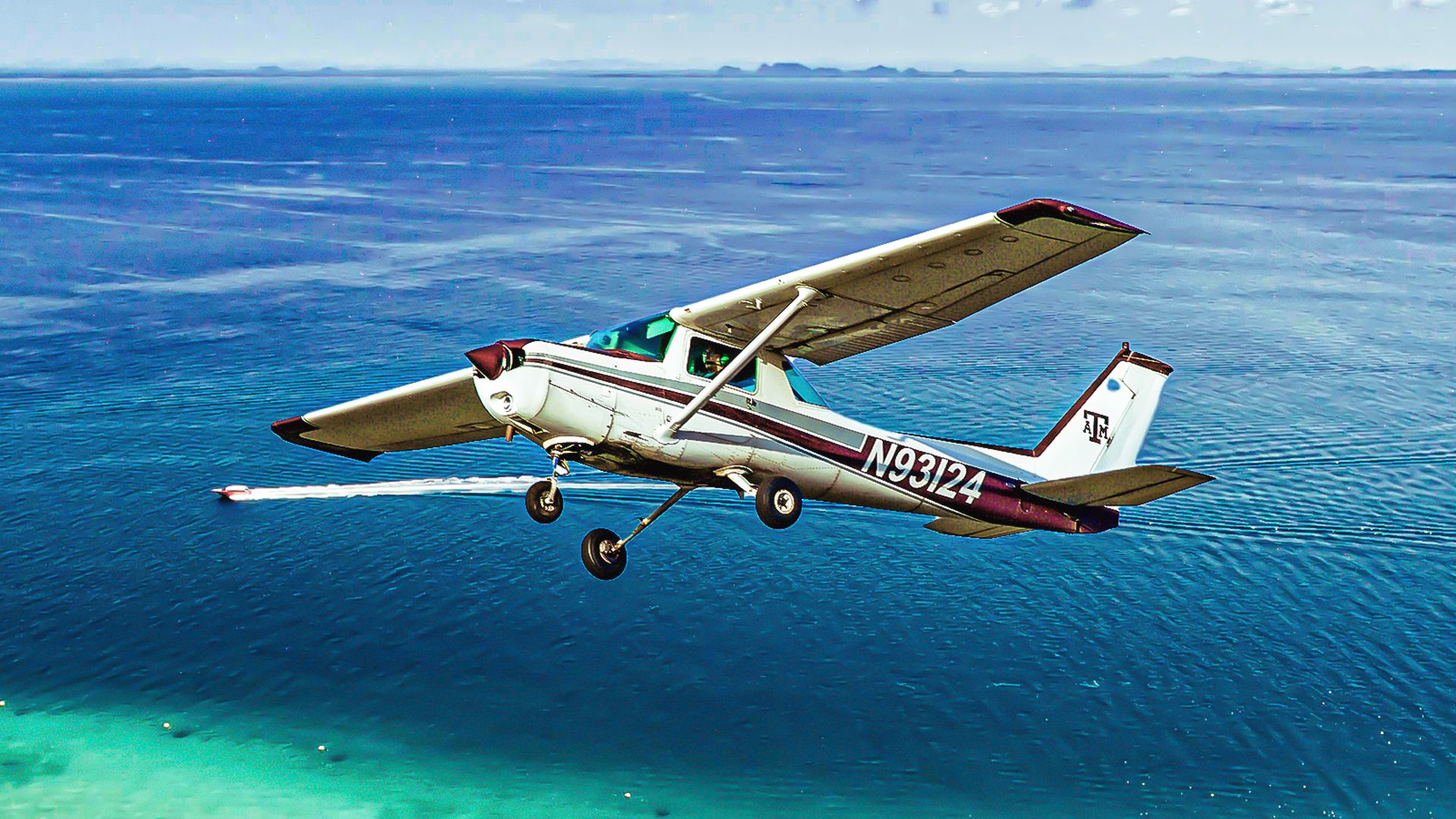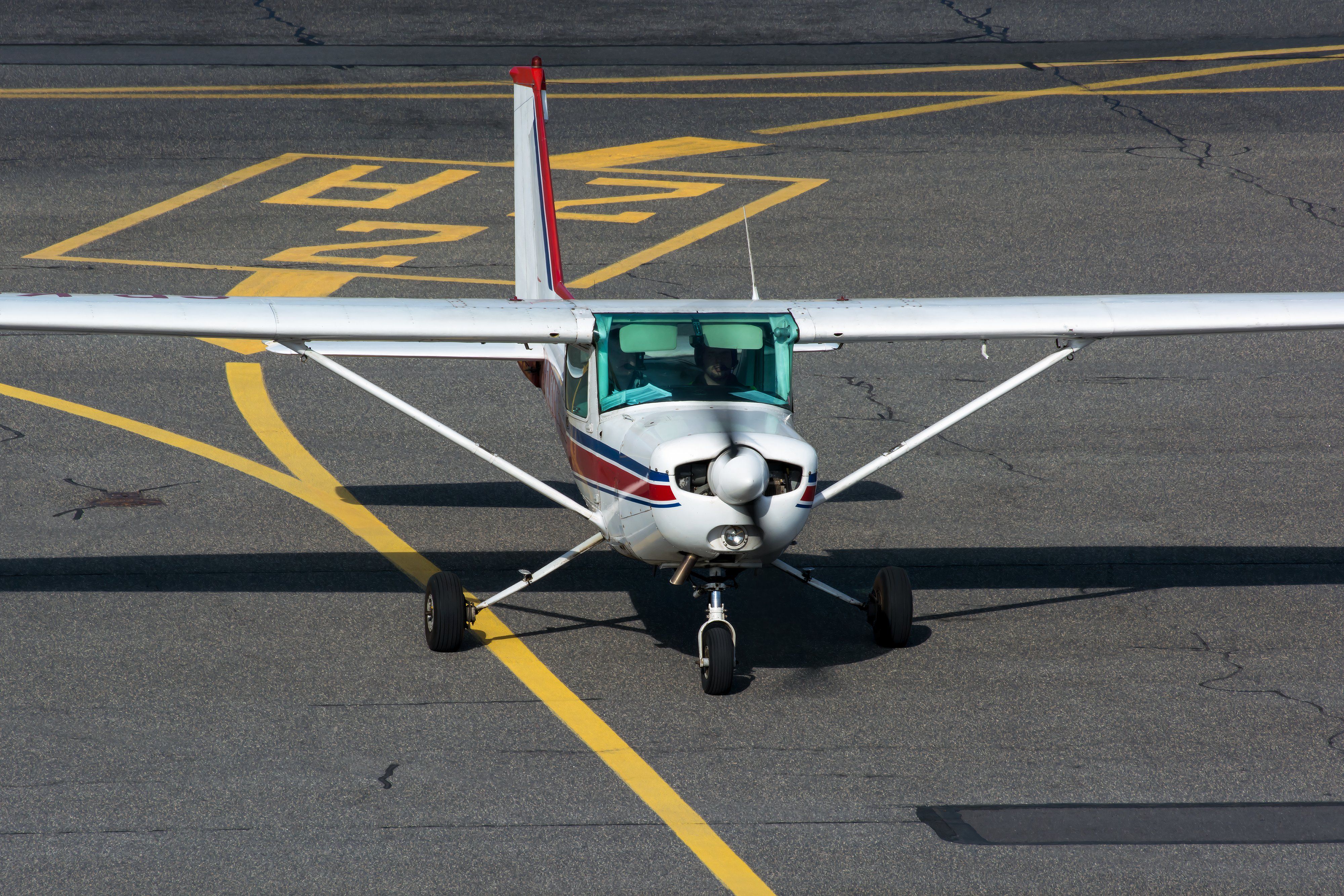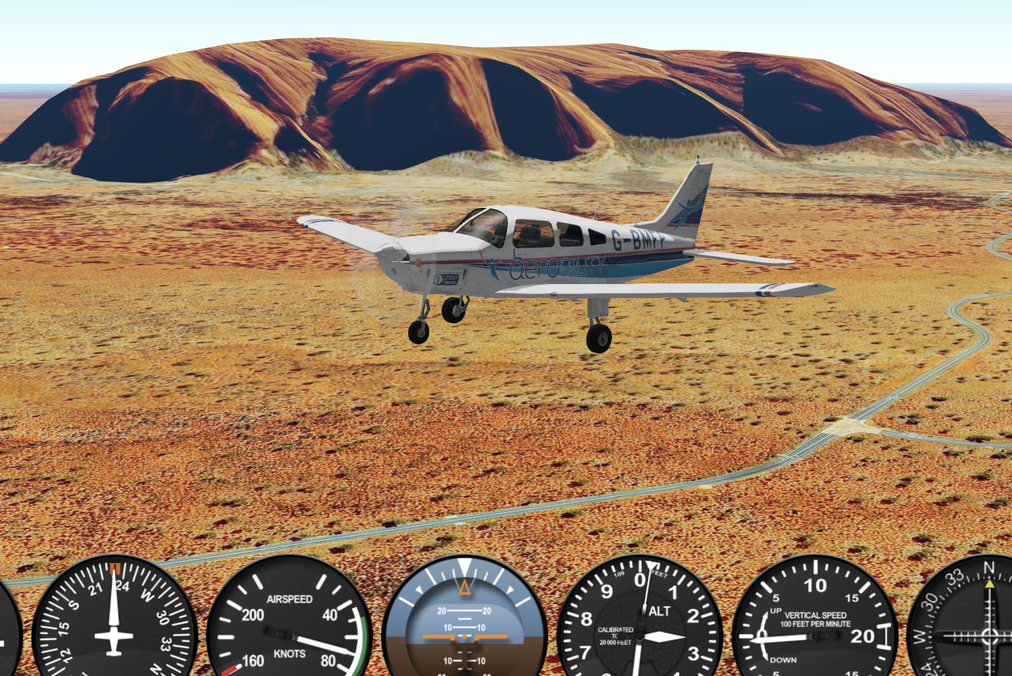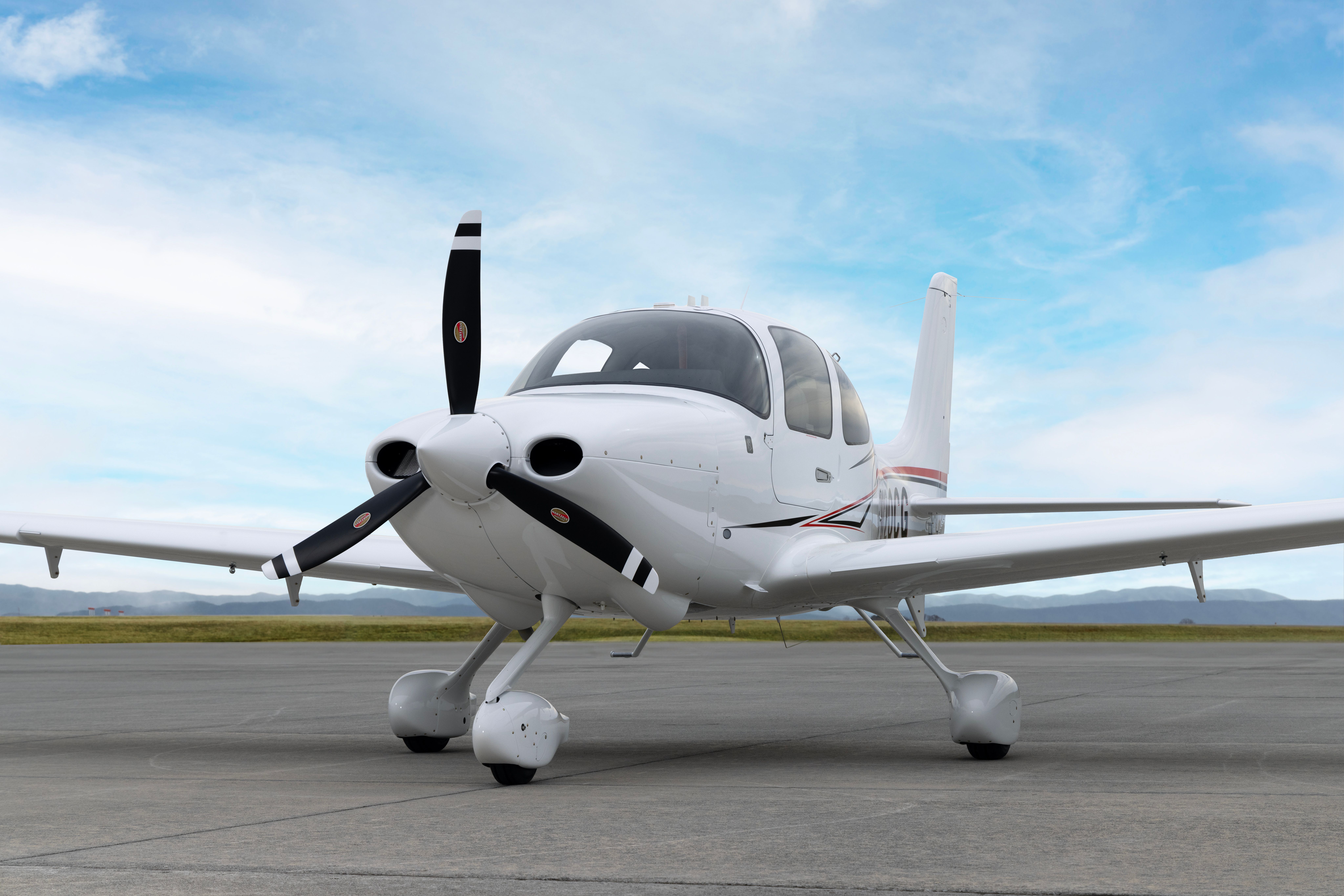A pilot training aircraft is designed with robustness, stability, and absolute reliability. The list compiles some of the best-selling flight training aircraft used by flight schools worldwide.
1
Cessna 150/152
Number produced: 31,423 (150: 23,839, 152: 7,584)
- Crew: one
- Capacity: one passenger
- Length: 24 ft 1 in (7.34 m)
- Wingspan: 33 ft 4 in (10.16 m)
- Height: 8 ft 6 in (2.59 m)
- Gross weight: 1,670 lb (757 kg)
- Powerplant: 1 x Lycoming 0-235-L2C flat-4 engine, 110 hp. (82 kW)
- Cruise speed: 123 mph (198 km/h, 107 kn)
- Range: 477 mi (768 km, 415 NM)
- Service ceiling: 14,700 ft (4,500 m)
The Cessna 152 is a two-seat general aviation aircraft, popular for its use in flight training. Based on the Cessna 150, the 152 incorporated minor design changes as well as more powerful engine.
Photo: Konwicki Marcin | Shutterstock
Featuring a fixed tricycle landing gear, it is one of the most loved aircraft for pilot training. The production of the Cessna 152 ended in 1985, and almost 40 years later, many are airworthy and regularly being maintained and used by pilot training institutions worldwide.
The popularity of the aircraft lies in its simplicity of control, stability, and dispatch reliability. There are numerous modifications available for the Cessna 152, including:
- Flap gap seals: Optimizes rate of climb and reduces drag
- Various wingtips: Increased cruise speeds and reduced stall speeds
- Auxiliary fuel tanks: Increased aircraft range
- Belly fuel drain valves: Efficiently drains fuel from the fuel system
2
Cessna 172 Skyhawk
Number produced: 44,000+
- Crew: one
- Capacity: three passengers, 120 lb (54 kg) of baggage
- Length: 27 # 2 in (8.28 m)
- Wingspan: 36 ft 1 in (11.00 m)
- Height. 8 ft 11 in (2.72 m)
- Gross weight: 2,450 lb (1,111 kg)
- Fuel capacity: 56 US gal (210 L) (52 US gal (200 L) usable)
- Powerplant: 1 x Lycoming 10-360-L 2A four cylinder, horizontally opposed aircraft engine, 160 hR. (120 kW)
- Cruise speed: 122 kn (140 mph. 226 km/h)
- Range: 696 NM (801 mi, 1,289 km) with 45 minute reserve, 55% power, at 12,000 feet (3,700 m)
- Service ceiling: 13,500 ft (4,100 m)
The Cessna 172, also known as the Skyhawk, is the most produced piston engine aircraft with over 44,000 examples built since the 1960s. The stability and reliability of the Cessna 172 has made it popular among pilot training institutions and trainee pilots worldwide. The larger cabin can accommodate up to four people and can fly a range of 700 NM (800 miles, 1,300 km).
Photo: Textron Aviation
According to Textron Aviation,
“With simplistic flight characteristics, great visibility, and a sophisticated glass cockpit outfitted with Garmin® G1000® avionics, the Cessna® Skyhawk® piston boasts a slow landing speed and a lenient stall. These characteristics make it a flight training favorite ideally suited for student pilots and it’s perfectly designed to help you soar.”
3
Piper PA-28 Cherokee
Number produced: 32,778
- Crew: one
- Capacity: three passengers
- Length: 23 ft 3.6 in (7.102 m)
- Wingspan: 30 ft 0 in (9.14 m)
- Height: 7 f 3.6 in (2.225 m)
- Gross weight: 2,150 lb (975 kg)
- Max takeoff weight: 2,150 lb (975 kg)
- Powerplant: 1 x Lycoming 0-320-E2A 4-cylinder air-cooled horizontally-opposed piston engine, 150 hp (110 kW/)
- Cruise speed: 108 kn. (124 mph. 200 km/h)
- Range: 465 NM (535 mi, 861 km)
- Service ceiling: 14,300 ft (4,400 m)
The Piper PA-28 Cherokee is a light aircraft designed by Piper Aircraft for private use, humanitarian flights, and flight training. The all-metal, unpressurized aircraft features low-mounted wings and tricycle landing gear. Following its maiden flight, the PA-28 received its Federal Aviation Administration (FAA) type certification in 1960. Powered by a Cherokee 180 (180-horsepower, 134-kW) Lycoming 0-360 engine, the aircraft offers optimized power output, resulting in greater reliability in flight.
Photo: Aerobility
The engine also enabled the four-seater version with all its weight to have sufficient power. The initial versions were equipped with a “push-pull”-style throttle controls, which were replaced with quadrant levers in 1968, offering another competitive advantage to pilots. Unlike conventional training aircraft with high wings, the PA-28 Cherokee features a low-wing design, offering a unique flight training experience for student pilots.
4
Cirrus SR20
Number produced: 1,800+
With a glass cockpit and a ballistic parachute system, the SR20 offers modern, and expensive, flight training experience for student pilots. The aircraft was developed into SR-22, introduced in 2001, which went on to become the most produced aircraft of the 21st century.
Photo: Cirrus
According to the Aircraft Owners and Pilots Association,
“The composite finish is smooth and, of course, devoid of rivet lines. It’s got very long wings, so avoid cutting corners while taxing. However, the free-castering nose wheel allows very tight turns, and visibility out of the cabin is excellent.*
“The throttle, mixture, boost pump, and flap controls are positioned well, and the ability to push forward and go fast without manipulating a prop control is probably a crowd-pleaser.”
5
Diamond DA40
Number produced: 2,200
- Crew: one
- Capacity: three passengers
- Length: 8.1 m (26 ft 7 in)
- Wingspan: 11.9 m (39 ft 1 in)
- Height: 1.98 m (6 ft 6 in)
- Gross weight: 1,198 kg (2,641 lb)
- Powerplant: 1 × Lycoming IO-360-M1A 4-cylinder air-cooled horizontally-opposed piston engine, 134 kW (180 hp)
- Cruise speed: 279 km/h (173 mph, 151 kn)
- Range: 1,341 km (833 mi, 724 nmi)
- Service ceiling: 5,000 m (16,000 ft)
Built in Austria and Canada, the Diamond DA-40 is a single-seat light aircraft designed and developed by Diamond Aircraft Industries. Designed after the success of the two-seater DA-20, the DA-40 is built with composite materials.
The Diamond DA-40 is powered by Textron Lycoming IO-360 M1A engine, generating 180 hp (135 kW) of takeoff power. With a maximum gross weight of 2,646 lbs (1,200 kg), with modifications installed, the aircraft has a range of up to 725 NM. The stability, control, and other flying characteristics of the aircraft makes it a popular choice for flight training schools.





